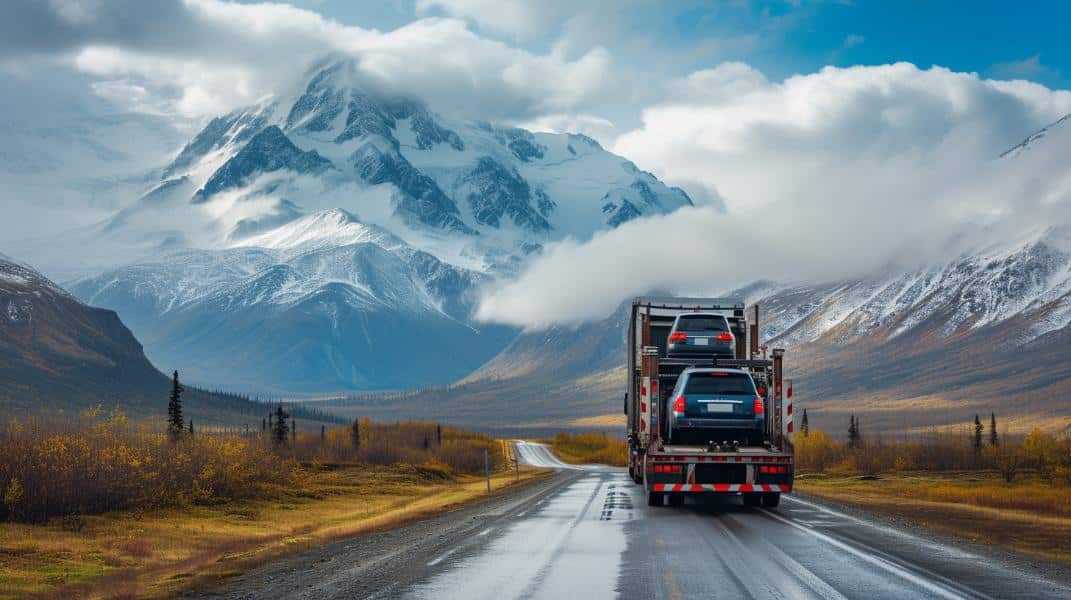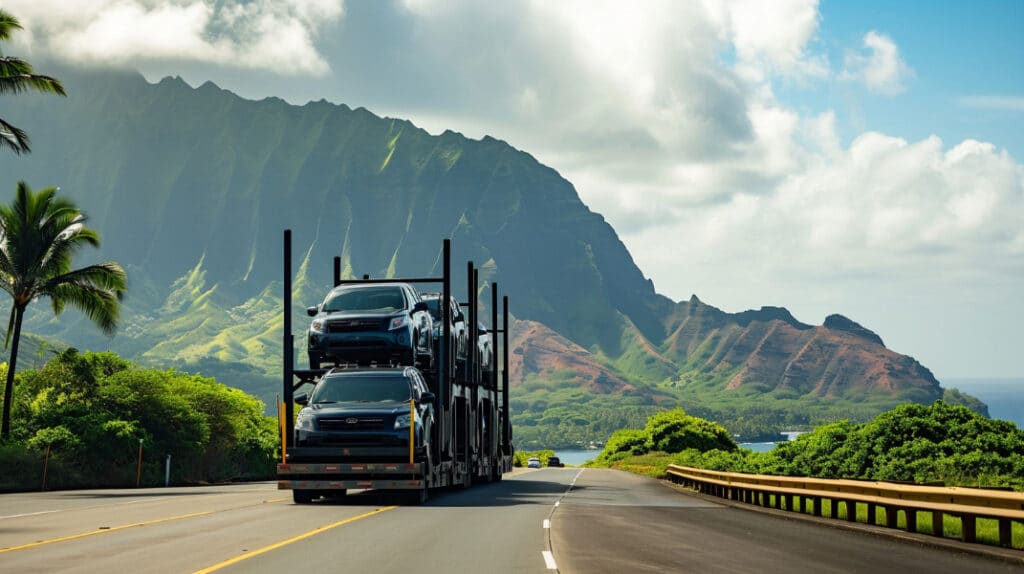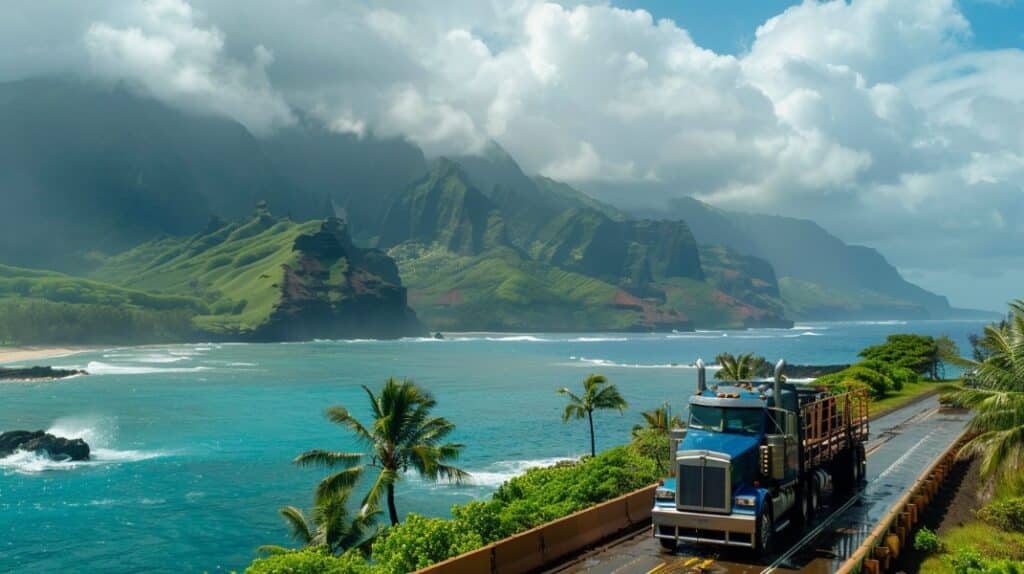Curious about the complexities involved in transporting vehicles from coast to coast, spanning the mainland USA to the exotic landscapes of Hawaii? It necessitates a nuanced grasp of marine transport options, island-specific regulations, and seamless coordination with transport partners. AA Auto Transport, a leader in the industry, unveils the intricacies of this fascinating process, guaranteeing a smooth journey for your vehicles.
Marine Transport Options: Exploring the unique shipping methods to these non-contiguous states.
When venturing into the vast expanse of oceanic transport, understanding the unique methods of shipping to non-contiguous states like Hawaii and Alaska is essential. Understanding these marine transport options empowers vehicle owners to make informed decisions based on their specific needs and preferences.
- Roll-On/Roll-Off (RoRo) Shipping: Leveraging specialized vessels, RoRo shipping allows vehicles to be driven on and off the ship, streamlining the loading and unloading process.
- Container Shipping: Providing an extra layer of protection, vehicles can be secured within containers during transit, shielding them from the elements and potential damage.
- Lift-On/Lift-Off (LoLo) Shipping: Ideal for oversized vehicles or those without the capability to be driven, LoLo shipping utilizes cranes for lifting vehicles on and off the ship.
- Multi-Carrier Solutions: Some transport companies offer integrated solutions, combining various methods to optimize efficiency and cost-effectiveness.
- Consolidated Shipping: Sharing container space with other vehicles can be a cost-efficient option for smaller shipments, providing a shared transport solution.
- Exclusive Container Service: For premium protection, exclusive container service ensures that a single vehicle occupies an entire container, minimizing the risk of damage from neighboring cargo.
Island-Specific Regulations: Understanding any special regulations for vehicle transport to Alaska and Hawaii.
Navigating the waters to Alaska and Hawaii brings forth island-specific regulations that demand attention to ensure a seamless transport process. Vehicle owners can confidently navigate the regulatory landscape and ensure a smooth transport experience by comprehending and adhering to these island-specific regulations.


- Temperature and Climate Considerations: Recognizing the varying climates of Alaska and Hawaii is crucial, as it may impact the choice of shipping method and the necessary vehicle preparations.
- Agricultural Inspection Requirements: Both Alaska and Hawaii have strict agricultural inspection regulations. Ensuring your vehicle adheres to these guidelines prevents delays and potential fines.
- Customs Declarations: Familiarize yourself with customs regulations for each destination, understanding the required documentation and procedures for a smooth entry.
- State-Specific Vehicle Standards: Alaska and Hawaii may have unique vehicle standards, including emissions and safety regulations. Confirm compliance to avoid legal complications.
- Licensing and Registration: Verify the licensing and registration requirements in each state, ensuring all paperwork is for a smooth transition.
- Timing and Scheduling: Plan your transport in consideration of seasonal weather patterns, ensuring a safe and timely arrival at the destination.
Coordinating with Transport Partners: Ensuring seamless collaboration between land and sea transport.
Achieving a smooth transition between land and sea transport involves effective coordination with transport partners. A stress-free coordination between transport partners is the linchpin of a successful ocean-to-ocean vehicle transport journey.
- Communication Protocols: Establish clear communication protocols with both the land and sea transport providers to ensure everyone is on the same page regarding timelines and expectations.
- Documentation Exchange: Share all necessary documentation, including shipping manifests, vehicle information, and customs paperwork, to facilitate a seamless transition at each stage of the journey.
- Security Measures: Implement security measures to safeguard vehicles during transitions, including proper loading and unloading procedures and constant monitoring during transport.
- Tracking Systems: Utilize advanced tracking systems to monitor the location and status of vehicles in real time, providing transparency and peace of mind to both vehicle owners and transport partners.
- Emergency Response Plan: Develop and communicate an emergency response plan, ensuring all parties involved are aware of procedures in case of unexpected events during transport.
- Flexibility in Scheduling: Maintain flexibility in scheduling to accommodate any unforeseen delays or changes, fostering a collaborative and adaptable transport process.
The Takeaway
In the vast realm of oceanic auto transport, AA Auto Transport unveils the intricacies of navigating from the mainland USA to the exotic islands of Hawaii and Alaska. Explore the auto transport Mainland Hawaii options, and choose AA Auto Transport for your ocean-to-ocean vehicle transport needs — where expertise meets excellence!

